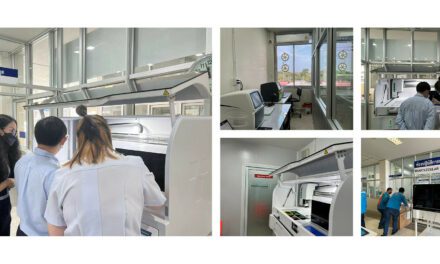MDx provides a highly sensitive, fully automated approach that streamlines the diagnosis-to-treatment process.
BY: ROBERT D. JENISON, CHIEF TECHNOLOGY OFFICER, GREAT BASIN CORP, SALT LAKE CITY
The use of molecular diagnostic testing (MDx) has rapidly grown over the last 5 years, due in part to technology advances such as higher sensitivity and specificity and workflow enhancements. However, many hospitals—especially smaller community hospitals—are still using older diagnostic methods that are slow, labor intensive, and have poorer sensitivity and/or specificity.
According to Cardinal Health, Dublin, Ohio, of the approximately 5,000 community hospitals in the United States, only about 10% perform MDx testing. Further, according to a 2011 report by investment bank and asset management firm Piper Jaffray, Minneapolis, MDx adoption in hospitals remains under-penetrated, particularly testing for hospital-acquired infections (HAIs) such as Clostridium difficile (C. diff) and methicillin-resistant Staphylococcus aureus (MRSA)—two of the most common and deadly HAIs.
Due to providing perceived upfront cost savings, many hospitals continue to employ older testing systems. The limitations of these approaches, such as time-consuming procedures and/or a high fraction of incorrect test results combined with a shortage of trained laboratory personnel, can lead to delays in test results and treatment, resulting in poorer patient care, potential hospital readmissions, and ultimately, higher cost of diagnosis and treatment.
Now, challenged by the pay-for-performance provisions of the Affordable Care Act (ACA) , hospitals are looking for efficiencies to streamline and make more effective the laboratory process. MDx has come of age to help hospitals meet this challenge.
Pay-for-performance will drive hospitals to rethink diagnostic practices
Implemented in October 2012, the ACA rewards hospitals or applies penalties to Medicare reimbursements based on quality of performance, including patient satisfaction and health outcomes. Additionally, the Hospital Readmissions Reduction Program was also implemented, which imposes penalties on hospitals whose rates of Medicare readmissions are higher than national averages.
According to a recent study published in the journal of the Society for Healthcare Epidemiology of America (SHEA), there is a strong link between HAIs and patient readmission after an initial hospital stay. The study suggests that reducing HAIs could help reduce readmissions, which is a major driver of unnecessary health care spending and increased patient morbidity and mortality. With this new reality in reinfection and reimbursement tied to performance, hospitals are looking to technology such as MDx to help shorten time-to-appropriate treatment, resulting in improved clinical outcomes and reduced costs.
The latest advances in MDx not only deliver fast and accurate results, but can also help physicians determine the correct course of treatment sooner and avoid inappropriate therapies. A significant advantage of MDx is that it has capabilities to detect infection mechanisms that affect susceptibility of pathogens to drug therapy. This expanded set of data prevent health care providers from prescribing expensive—and often toxic—medications to patients who may not need, or have a positive response to, aggressive treatment. This approach can improve hospital management and treatment of disease, and reduce transmission risks to other patients.
Looking forward to next-generation MDx systems, assay panels will provide more information per sample, offering not only rule-in, but rule-out test results. Additionally, higher-throughput approaches that can process multiple samples on-demand are under development, offering improved workflow and resulting in labor cost savings. Hospitals will then be able to process more tests, allowing them to quickly detect infection and better treat the patient.
MDx to become part of standard of care
MDx provides a highly sensitive, fully automated approach that streamlines the diagnosis-to-treatment process, which is particularly important for virulent HAIs. Faced with a growing epidemic of HAIs, coupled with the need to quickly adapt to ACA’s pay-for-performance model, now is the time for hospitals to consider adopting MDx, especially now that they have lower cost options that are highly efficient, reliable, and efficacious.




